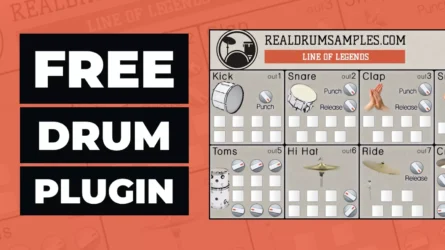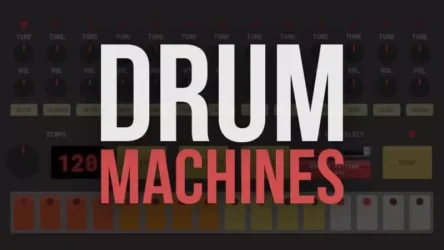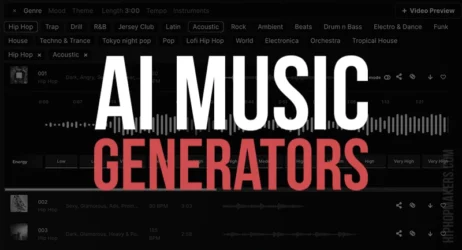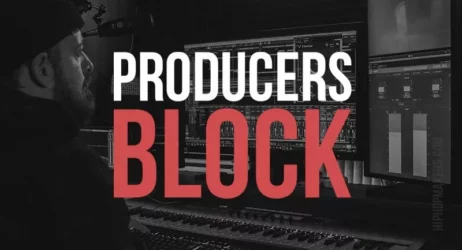This guide will answer what is a beat in music, explain the different types of beats, why they are important, and how to read them when creating music.
What is A Beat in Music?
The Beat in music refers to the basic unit of time in a song. It is the rhythmic measure of a unit but does not share the exact definition of a rhythm. Beats are the length of the musical notes which form an integral part of a song. The beat affects the speed of the track.
- What Is A Beat in Music
- Beat vs. Rhythm
- How Can You Tell The Beat Of A Song
- Types Of Beats Are There In Music
- How Do You Read Beats
- Why Are Beats Important In Music
- How Do You Describe Rhythm
- How Long Is A Beat In Music
What Is A Beat in Music?
The beat in music is the steady pulse that remains the same throughout the whole composition of a piece. It is used to indicate the basic unit of time in a soundtrack. Composers count the pulse being played to synchronize the tune together.
Beats are an essential part of the structuring of a song.
Harmony, melody, and beat are the essential components in producing such a piece. Rhythm is the inhabitation of beats by a pulse pattern, and if it combines with pitch, a melody is formed.
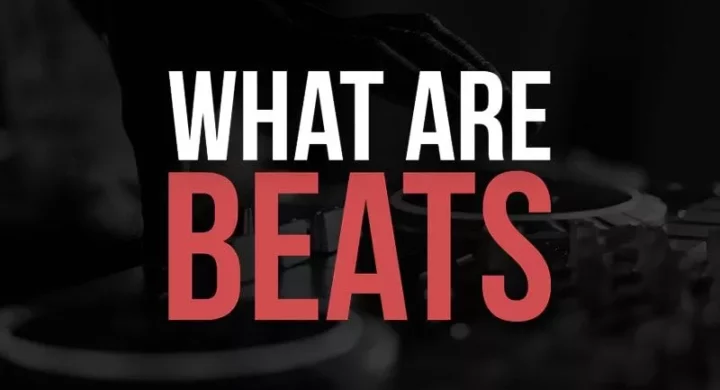
While the melody and harmony meet together to make sounds in music, the beats create the song’s tempo. The tempo, dubbed as the song’s speed, is the basic duration of time needed between the length of musical notes.
In simple words, the beat is associated with the basic unit of time within a music piece.
It remains primarily consistent within musical measures. The beat would refer to what one would hear on a metronome on the piano. The beat in a song is the steady pulse underlying the music throughout the song and has a fixed tempo meaning constant speed.
Beat, rhythm, tempo, speed, and meter are all synonyms for indicating the pace of a song, but all have their own unique distinctions. The “time signatures” determine rhythm and meter. “Sheet music” is divided into bars or measures.
The time signature is present to provide us with information on the quantity of pulse or beats contained in a bar. At the same time, the beats are shown by a menu of musical notes.
Rhythm, in comparison, is the changing unit of time of the music notes. These are the complex sequence of where the notes land within the beat. Rhythm refers to the perceptible “length and accent” of the musical notes themselves.
Beats are easily identified by listeners when they nod their heads and tap their fingers to the sound of the music. Which is called “going with the flow,” which means listeners react to the beats and rhythm composed and intended by musicians. The most popular beat is the striking id drumsticks on drums.
What Is The Difference Between Beat & Rhythm?
A beat and a rhythm are often terms in music composition that are used interchangeably. Both are used as repeating units in a song because the beat is part of the rhythm. However, there is a significant difference that separates the two terminologies.
The beat is the steady pulse that remains the same throughout the whole composition. The beat is the tempo or speed at which music is played. It remains primarily consistent within musical measures. The beat would refer to what one would hear on a metronome on the piano.
Rhythm, by contrast, is the varying duration of the music notes. These are the complex arrangements of where the notes fall within the beat. Rhythm refers to the perceptible “length and accent” of the musical notes themselves. It is the inhabitation of beats by a pattern of beats, and if it combines with pitch, a melody is formed.
How Can You Tell The Beat Of A Song?
Recognizing the beat in a song means isolating the pattern and tempo of the music. If you know how to find the beat, you can control all of the other elements of the music. A simple way to tell a song’s beat is to notice when you tap your foot or nod your head when listening to a catchy song.
Since beat is essentially the pulse of a song, you can focus on locating the pulse when played in the lower instruments of the song. Some of the beats in popular songs are as follows:
| Song names | Beats |
| Gangnam Style by PSY | Synthesized pulse on beats 1-2-3-4. |
| We are Never Ever Getting Back Together by Taylor Swift | bass drum plays a steady slow pulse through most of the song at 86 BPM. |
| Walking Blues Line | Steady Pulse in 4/4-time rhythm on each beat in 4/4 time. You can count this out loud as 1-2-3-4. |
By practicing the beat and pulse, by using a metronome and drumstick, one can increase their sense of music and easily recognize beats in other songs.
How Many Types Of Beats Are There In Music?
The beat is the duration of time between every musical note created, which results in the underlying pattern of a piece. There are four significant types of beats in music which are as follows:
- Upbeat
- Downbeat
- Stressed beat
- Non-stressed beat
The downbeat is the start of the bar, while the upbeat is the last beat in the previously played bar. This sequence repeats, so the downbeat starts again. An “upbeat figure” means when an anticipatory note or succession of notes is directed before the bar line of the soundtrack.
An example of clapping best explained the two beats in question; When the hands meet, the clap is timed as downbeat, while the pulling away of hands is timed as Upbeat.
A stressed beat is indicated when a particular beat is made to stand out from a string of beats in the timeframe of a song. The said beat is given emphasis by making it louder orbit high strung and is usually played as an opening beat in the measure of music. The non-stressed beat is simply the opposite of the stressed beat. It makes up the majority of the beats in a piece.
How Do You Read Beats?
The key to communication and understanding is having an interface between mediums. To read beats in music, one must command the musical language and its denoted symbols. You must understand a ‘pulse’ as beats are a steady pulse in a piece of music.
Composers have already designed symbols to represent tempo and meter by noting them down in the manuscript. We must decode it to read the musical notes. The time signature also appears at the opening of a piece, placed after both the clef and the key signature.
Music is divided by vertical lines, which each contain bars or measures.
The time signature is present to provide us with information on the quantity of pulse or beats contained in a bar. Also, it tells the note number given to a single beat. The time signature represents the general rhythm of the piece.
The top digits on the time signature specify the number of beats in each bar. For example, in 4/4 time, the top digit specifies there are 4 beats to the measure, and the bottom one informs the quarter note gets one beat—1-2-3-4. Each bar must total up to 4 quarter beats in any combination of note values.
Why Are Beats Important In Music?
The beat is an essential and integral aspect of any musical piece and a key element in music composition. Composers and artists treat the beat as a medium of uniformity when orchestrating various musical instruments.
They establish the beat by assigning a speed at which musicians have to perform. If an unchanged beat underlying in the complete song is not set, then some instruments would finish before or after the intended closing of the piece.
Beat paves the way to a proper composition structure. It aligns all the notes to create a harmonious music piece instead of random noise. A well-themed and timed beat will connect closely to its audience, who can synchronize and move their body with the intended moments.
How Do You Describe The Rhythm Of A Song?
The three mains for a soundtrack are harmony, melody, and beat. The beat creates a rhythm that affects the tempo or speed of the track. When rhythm combines with pitch, a melody is formed.
A rhythm is a series of musical notes being played in a pattern. The repetition of said notes can be longer or shorter as there is no restriction regarding it.
Quite simply, rhythm is explained by repeating the cycle of notes and the absence of those sounds in a time, which produces a rhythmic pattern in which the duration or length, tempo or speed, and emphasis on intensity of the notes played are dictated.
The core elements of a rhythm include the following:
- Time signature
- Meter
- Tempo
- Strong beats and weak beats
- Syncopation
- Accents
- Polyrhythms
A rhythm in music is dubbed as the “flow” of the song, and it is the complex arrangement of where the musical notes fall within the beat at any given time.
How Long Is A Beat In Music?
The beat is termed as the pulse of a song that forms the music’s speed, called tempo. Thus, it is measured in “Beats per minute” or BPM. The time signature of the soundtrack finds the beat, so, for example, there is 100 BPM in 4/4, which means there are 100 quarter musical notes in one minute. BPM equals 60 beats in every minute on the clock.
Summary of Beats in Music
A beat is the basic unit of time in a song. The rhythm of a unit does not share the exact definition of a rhythm, but it is a measure of rhythm. A beat is the length of the musical notes that are part of a song. A beat creates a rhythm that determines the track’s speed.
The three core ingredients for a soundtrack are harmony, melody, and beat.
Understanding a beat in music is a fundamental skill every musician needs to master. At its core, a beat is an organizing principle that provides a rhythmic foundation for any piece of music. It’s the heartbeat of a song, an underlying pulse that gives it life and forward motion. From the simple drum beat to more complex rhythms, the role of beats in shaping the sounds of a musical piece cannot be overstated.
Music notation, like quarter notes, half notes, and eighth notes, represents these beats, giving musicians a roadmap to follow. A quarter note receives one beat, while a half note takes two beats, and an eighth note only half of a beat.
This gives music its rhythm, its sense of pace, and movement. Evenly spaced beats create a steady, predictable sound, often found in popular music like country music, while off beats can create tension and make a piece sound more interesting.
The time signature, another essential element of music theory, tells us how many beats are in each measure. For instance, in a common time signature like 4/4, there are four beats per measure, each represented by a quarter note. In a 3/4 time, there are three beats per measure, giving a different rhythmic pattern.
Yet, a song isn’t limited to these. It could even have five beats in each measure, presenting a more complex rhythm that can be challenging but rewarding to play.
From the drums played by a live musician to the beats created on drum machines, the application of these beats ranges wide. They give us the rhythmic patterns that make us dance, they create the sound and the sense that help us connect with a song. Strong and weak beats, used wisely, can induce a spectrum of emotions, from excitement to calmness.
In conclusion, whether you’re listening to a simple country music song with a steady four-beat rhythm or a complex piece with intricate rhythms and offbeats, remember that every note, sound, and beat is part of a carefully designed rhythmic pattern.
Understanding these elements not only enhances our appreciation of music but also empowers us to create our own. As we dive deeper into music theory and practice, we can begin to explore the world of rhythms and beats, taking our musicianship to new heights.
I hope you found this information on beats in music helpful.

